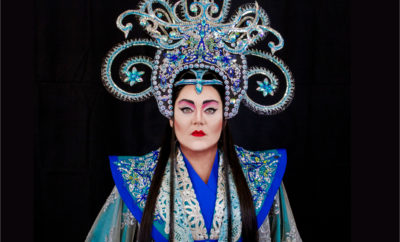
Health & Wellness
InHealth: Treatments for Female Changes
By Karen O. Brainard, MD
Women have many times of transition in their lives—from a curious child to a young woman finding her place in the world, to a mature woman contributing to her home and greater society, to a senior woman rich with experience and eager to share the fruits of her life with others. Menopause is one of those transitions that can be anywhere from a challenging time of emotional and physical turmoil to a quiet release from hormonal cycling and childbearing concerns. One of my abiding interests as a family doctor has been helping women navigate the phases of their lives as their biology and functions change.
Menopause is defined as one year without menses and it signals the end of reproductive capacity. The ten years around that time are referred to as perimenopause. During this time a woman’s ovaries are not always producing estrogen in the usual pattern, and ovulation may or may not take place. This erratic, then decreased production of estrogen and loss of cyclical progesterone causes about 75% of us many uncomfortable symptoms such as hot flushes and sweats or just a sensation of temperature instability.
Growth hormone production decreases after age 40 and testosterone drops with the loss of ovarian function. For some women the drop in pregnenolone, which can also occur, may make thinking a bit foggy. Just as some young women find themselves emotionally more sensitive and irritable around the time of their menses, some perimenopausal women have emotional swings. Sleep becomes disturbed for many, either because of flushes or sweats in the night, or just because the change in sex hormone levels can affect the function of neurotransmitters, resulting in a mind that does not quiet as easily as in past years.
The passage of time reduces the frequency of symptoms by 50% per year for most. For those who suffer a severe degree of distress, there are many available therapies: traditional herbs, acupuncture, hormone replacement therapy, SSRI medications, and stress management techniques like yoga and meditation. Some women experience a drop in their sex drive, fatigue, weight gain, loss of muscle mass, osteoporosis and urinary control issues. Most every woman, over time, experiences thinning and dryness of the vulvar and vaginal tissues. This can become so severe that sexual relations are not possible without significant pain.
Treatments for this problem include vaginal hormone therapy, lubricants, and fractional CO2 laser therapy. There are now many forms of vaginal estrogen: creams, tablets, suppositories and rings. The hormone DHEA is converted into estrogen and testosterone by the cells that it comes in contact with, so it can be a therapy for women who must avoid estrogen and progesterone. Lubricants are a temporary help, but do not address the thinning of the cell layers of the vulvovaginal mucosa. Fractional CO2 laser stimulates growth of new cells from multiple tiny thermal injuries that extend a very short way below the surface. This technique has been used for decades in cosmetic facial skin rejuvenation.
The Italians first worked on adapting this technology for mucosal tissues to address the needs of breast cancer patients, for whom hormones were out of the question. This treatment is quite effective, requires three treatments at six-week intervals initially, then a “refresher” treatment once a year. All the treatments directed at vulvovaginal mucosa also help with bladder function due to the benefits on urethral tissue.
There is much to be done to ease this transition time if you find it challenging. There’s no need to suffer in silence with so many options now available!
Dr. Karen O. Brainard
Bradenton East Integrative Medicine
8614 E State Rd 70, Bradenton
941.727.1243
beimonline.com







You must be logged in to post a comment Login